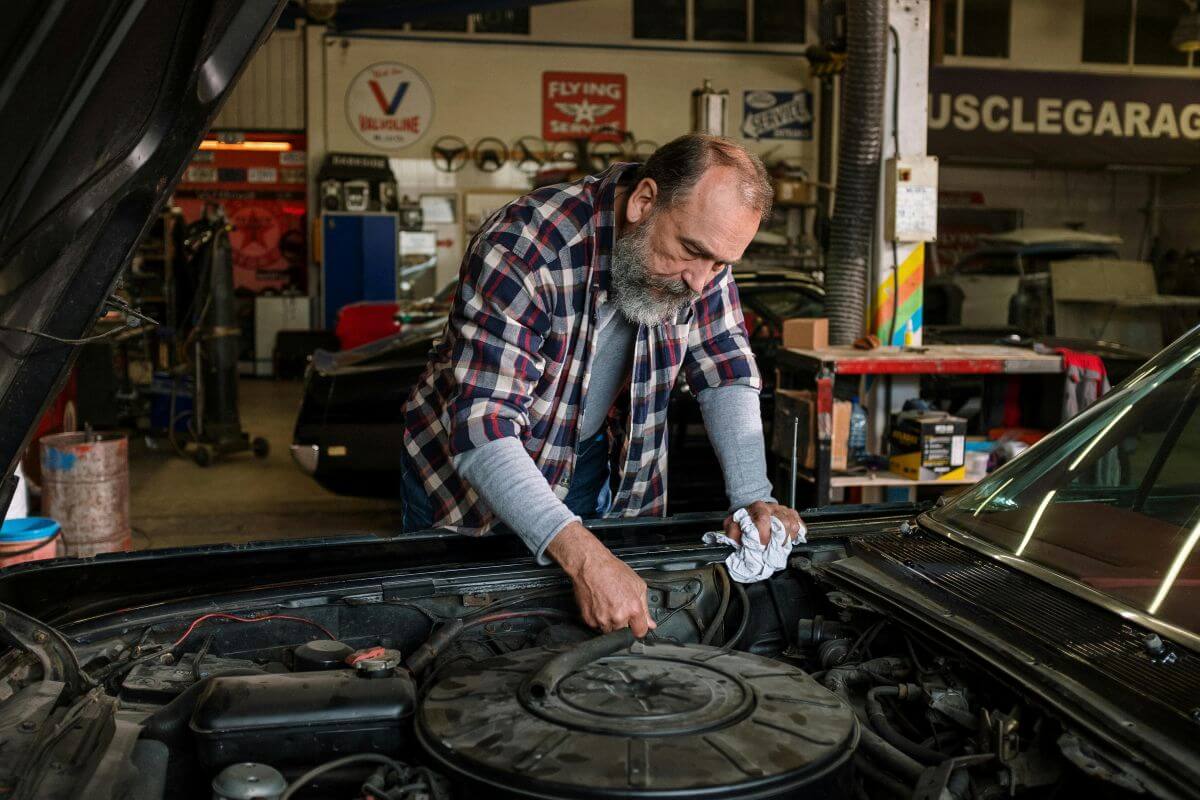Classic car care hacks you don’t hear every day
Owning a classic isn’t just about turning a key and going for a Sunday spin, it’s about preserving history, wrenching with pride,
and keeping something special alive. At Abbeyfields Insurance, we live and breathe classics (we even own one ourselves, an Escort
RS 2000), so we know the difference between the usual “check your oil” advice and the little insider tricks that really make a
difference. Here are a few of the lesser-talked-about maintenance tips every classic car owner should have up their sleeve.

1. Stick with high-zinc oils
Today’s modern oils just aren’t made for older engines. They’re missing the zinc and phosphorus (ZDDP) additives that protect camshafts and bearings in classics. If your pride and joy was built between the 1950s and 1980s, go for a good mineral or semi-synthetic oil, or even add a zinc booster. It’ll help keep things running smoothly for years to come.

2. Don't forget the grease
Modern cars don’t really have them, but classics often hide grease fittings on suspension, steering and driveshaft components.
Hit them with fresh grease every 3,000 miles (or whenever you change the oil) and you’ll notice the difference. Smoother ride,
longer-lasting parts, and fewer “where’s that noise coming from?” moments down the road.
3. Store your soft-top with the roof up
Ever unfolded a vinyl roof after winter only to be greeted by stubborn creases or that musty smell? That happens when you leave
it folded away. Always store your soft top raised, it keeps the fabric taut, the stitching healthier, and stops moisture from
making itself at home. Treat it like a vintage leather jacket: store it right, and it’ll age beautifully.

4. Handbrake off if it's parked for a while
If you’re tucking your car away for a few weeks, resist the urge to pull the handbrake on. It’s a common cause of seized brakes.
Instead, leave it in gear and wedge some wheel chocks under the tyres. Come spring, you’ll thank yourself when your brakes
aren’t glued solid.
5. Battery care is key
Flat batteries are a classic car owner’s springtime curse. Disconnect yours if the car is sitting for a while and hook up a
trickle charger to keep it topped up. That way, you’ll avoid corrosion, extend battery life, and dodge the frustration of a
dead car on the first sunny weekend.

6. Hunt for hidden rust
Rust loves the spots you don’t think about, under arches, in sills, door bottoms, even under the carpets. Don’t just polish what’s
on show; get underneath with a torch and treat anything suspicious before it spreads. A bit of rust inhibitor now saves a world
of welding later.

7. Repack those wheel bearings
Unlike modern cars with sealed units, classic wheel bearings like a bit of hands-on attention. Whenever you’re doing the brakes,
give them a clean and a fresh pack of grease. It’s a simple job that stops overheating and avoids costly hub damage when you’re
out for a weekend blast.
8. Fire it up - and drive it
Just idling your classic on the drive isn’t enough. Take it for a proper run. Work the gears, use the brakes, and let the
suspension do its job. This keeps seals soft, fluids moving, and tyres in shape. Even a quick 15-minute run every few weeks
makes a huge difference to how well your car behaves.

9. Use your manuals
Your owner’s handbook and old workshop guides aren’t just nostalgic shelf-fillers. They’re full of era-specific info you won’t
find in modern guides. It’ll include things like torque settings, service intervals, and proper adjustment specs. Keep them
handy; they’re as important as the right set of spanners.
At Abbeyfields Insurance, we get what makes classics special because we’re enthusiasts too. That’s why we offer cover designed
around the quirks and needs of older cars, with advice rooted in real experience. Whether you pop us an email, give us a ring,
or swing by our Halesowen office, we’re here to help you enjoy your car without the worry.
Speak to a member of our specialist team for a quote today. Call us on 0121 550 2380 or email info@abbeyfieldsinsurance.co.uk